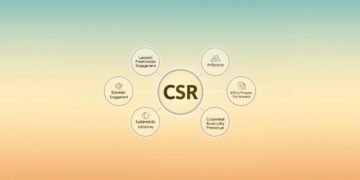Imagine shaping a legacy that transcends profit margins. Since 2015, 17 universal targets have redefined success for forward-thinking enterprises. These benchmarks address humanity’s most pressing challenges—from eradicating poverty to safeguarding ecosystems—and create a blueprint for meaningful action.
Pioneering firms like Ecovative and Bright Endeavors prove that purpose-driven strategies yield results. By embedding global priorities into their DNA, they’ve unlocked innovation while addressing systemic issues. Tools like the SDG Action Manager help leaders identify where their operations intersect with worldwide needs.
The 2030 Agenda isn’t just about compliance—it’s a $12 trillion opportunity. Organizations excelling in this space focus on measurable outcomes, not superficial claims. They align impact metrics with frameworks like IRIS+ to avoid greenwashing and ensure accountability.
Key Takeaways
- Global priorities established in 2015 guide ethical enterprise strategies
- Cross-sector collaboration amplifies organizational strengths
- Certification programs validate authentic commitment to progress
- Impact measurement tools prevent superficial sustainability claims
- Strategic alignment creates both social value and market advantage
Understanding the UN Sustainable Development Goals Framework
In 2015, a universal call to action reshaped humanity’s priorities. The 17-point blueprint emerged as a response to systemic challenges—from hunger eradication to equitable growth. This structure replaced the Millennium Development Goals (MDGs), which lacked measurable benchmarks for environmental and social equity.

From Vision to Actionable Metrics
The MDGs (2000-2015) focused narrowly on poverty reduction. Their successor introduced 169 measurable targets and 230 indicators through UN Resolution A/RES/70/1. This shift enabled precise tracking across 193 nations—a first in global cooperation. Enhanced accountability mechanisms now let stakeholders identify gaps in areas like clean water access or gender parity.
Architecture of Collective Progress
Each goal interconnects with others—climate action supports life below water, while quality education fuels economic resilience. Specific targets address renewable energy adoption and decent work conditions. The framework’s strength lies in its dual role: guiding policy makers and giving enterprises standardized metrics for ethical practices.
This multi-layered approach transforms vague aspirations into concrete steps. By aligning efforts through shared indicators, communities and corporations alike contribute to a measurable future.
How to Align Business Goals with the UN Sustainable Development Goals (SDGs)
Forward-thinking enterprises now chart success through purpose-driven roadmaps. Start by setting measurable objectives tied to global priorities—like renewable energy adoption or workforce equity. Patagonia’s regenerative agriculture initiatives and Unilever’s Living Wage commitments demonstrate this fusion of ethics and economics.

Strategic priorities must balance social value creation with operational efficiency. A food manufacturer might tackle poverty reduction through fair-trade sourcing while cutting waste in production. Cement producers adopt carbon capture tech to address climate challenges while future-proofing operations.
Effective alignment requires redesigning core processes. Interface transformed its flooring business by recycling fishing nets into carpets—directly supporting ocean conservation. Use frameworks like GRI or SASB to map progress against targets, ensuring transparency.
Innovation fuels transformative impact. IKEA’s circular product design slashes material use while creating customer value. The Science Based Targets initiative helps firms set auditable benchmarks, turning aspirations into results.
Authentic integration demands cross-department collaboration. Assign dedicated officers to track metrics and report outcomes. This approach builds stakeholder trust while unlocking new markets—proving shared value drives lasting success.
Strategic Integration and Impact Measurement for Sustainable Business Models
Leading organizations now prioritize measurable transformation over surface-level actions. With 84% of top enterprises identifying relevant sustainable development goals, strategic selection forms the bedrock of credible impact. A Theory of Change approach helps clarify which targets align with core operations and stakeholder priorities.
Selecting Targets and Mapping Metrics
Context determines relevance. Schneider Electric’s 17-goal alignment through five megatrends shows how sector-specific priorities guide choices. Tools like IRIS+ standardize data collection, turning qualitative aims like gender equity into trackable KPIs. This framework bridges intentions with evidence-based progress.
Measuring Outcomes Beyond Activities
True value emerges when tracking shifts in behavior or environmental conditions. Unilever’s carbon-positive initiatives demonstrate outcome-focused strategy, linking emission reductions to community health improvements. Platforms like Impact Cloud analyze longitudinal data, revealing whether training programs actually boost economic resilience.
Investors increasingly demand verified results—82% weigh ESG factors when funding ventures. Transparent reporting using GRI standards builds trust while spotlighting areas for refinement. Microsoft’s AI-driven resources optimization proves continuous improvement drives both impact and operational efficiency.
Collaboration, Innovation, and Local Context Adaptation
True progress thrives where partnerships meet purpose. Cross-sector alliances create ecosystems where expertise flows freely—nonprofits share grassroots insights, corporations contribute technical resources, and governments enable scalable frameworks. This synergy catalyzes systemic change while addressing unique regional challenges.
Fostering Collaborative Multi-Stakeholder Partnerships
The Farm to Food Bank initiative demonstrates collective power. Farmers, logistics firms, and food banks collaborate to redirect surplus produce—cutting waste while tackling hunger. Such models prove shared value emerges when diverse players unite around common targets.
Adapting SDGs to Industry and Community Needs
Illinois’ Coastal Management Program reimagines global ocean climate targets for local shorelines. By prioritizing dune restoration over generic policies, they protect ecosystems while boosting tourism growth. Tailored approaches ensure sustainable development resonates with cultural and economic realities.
Avoiding SDG-Washing with Credible Reporting
Transparency separates intent from impact. Patagonia’s Footprint Chronicles tracks supply chain emissions against renewable energy benchmarks. Third-party audits and GRI-aligned disclosures build stakeholder trust—proving commitments extend beyond marketing claims.
When organizations amplify their reach through partnerships and contextual innovation, they unlock dual wins: measurable progress toward global priorities and strengthened local communities.
Conclusion
Organizations hold transformative power to reshape society while advancing their core mission. Integrating global priorities into operational DNA requires three commitments: understanding universal frameworks, setting science-based targets, and fostering cross-industry partnerships. Only 0.2% of enterprises currently demonstrate strong alignment with multiple goals, revealing vast untapped potential.
Measurable progress begins by anchoring strategies in verifiable data. Tools like the SDG Compass turn aspirations into action plans, while transparent reporting builds stakeholder trust. Schneider Electric’s renewable energy innovations prove that ethical choices drive both impact and market leadership.
Collaboration accelerates results. Cross-sector alliances amplify efforts, whether redirecting food waste or scaling clean technologies. Every decision—from supply chain upgrades to community engagement—fuels systemic change.
The path forward demands courage to prioritize long-term value over short-term gains. With 95% of businesses yet to fully commit, leaders who act now will shape equitable economies. Let’s build legacies where planetary health and profit thrive as one.
FAQ
Why should companies prioritize the SDGs in their strategic planning?
Aligning with the SDGs drives innovation, strengthens stakeholder trust, and unlocks opportunities in emerging markets. Firms like Patagonia and Unilever demonstrate how integrating global goals like climate action and responsible consumption fuels long-term growth while addressing societal challenges.
How can organizations avoid superficial alignment with the SDGs?
Conduct materiality assessments to identify goals directly tied to core operations. Use frameworks like the UN Global Compact or GRI Standards to embed targets into decision-making. Transparent reporting, as seen with Microsoft’s carbon-negative pledge, ensures accountability beyond marketing claims.
What role do partnerships play in achieving SDG progress?
Cross-sector collaborations amplify impact. For example, IKEA partners with UNICEF to advance quality education in underserved regions, while Danone’s ecosystem alliances support zero hunger initiatives. Shared resources and expertise accelerate scalable solutions.
How do renewable energy investments align with multiple SDGs?
Transitioning to clean energy directly supports SDG 7 (Affordable Energy) while reducing emissions (SDG 13). Companies like Tesla and Ørsted also create decent work opportunities and foster industry innovation, demonstrating interconnected benefits.
Can small businesses contribute meaningfully to the SDGs?
Yes. Localized actions—such as adopting fair wages (SDG 8) or reducing water waste (SDG 6)—create ripple effects. Platforms like B Corp certification help SMEs measure and communicate their impact effectively.
What metrics prove genuine SDG alignment?
Track outcomes like reduced carbon footprint, improved gender equality in leadership, or community access to education. Tools like the SASB Standards or Impact Weighted Accounts link operational data to specific SDG targets for credible validation.












